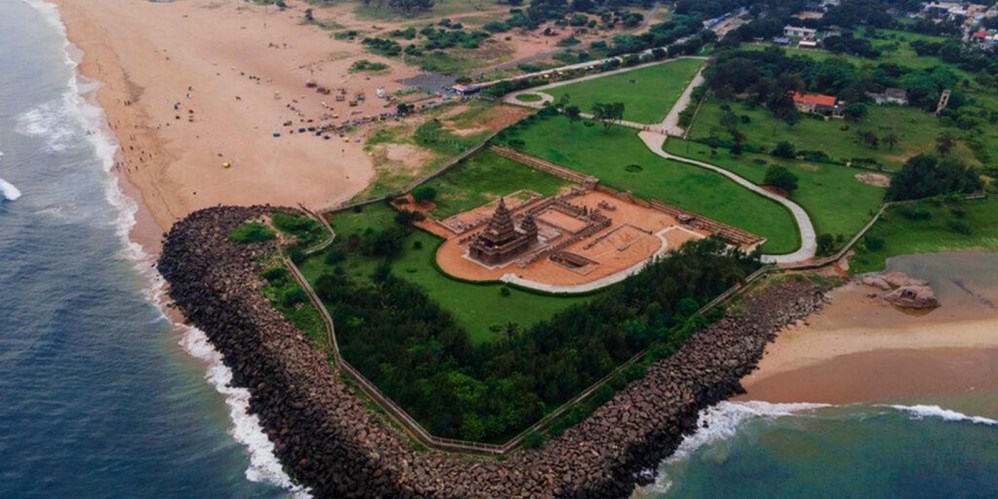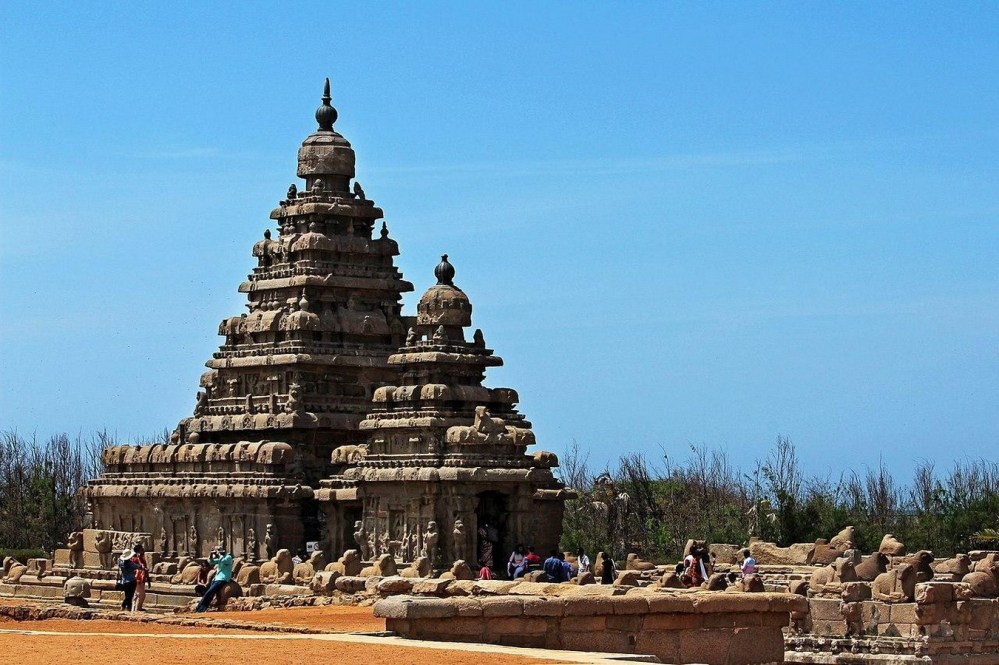Introduction

Mahabalipuram or Mamallapuram is a town known for its temple and ancient reliefs that still exists situated in the Chengalpattu district in the state of Tamil Nadu near its capital city Chennai. Though its a town with people with different lives and lifestyles the place was by only king Narasimhavarman II who developed the structures. This temple created many lives over there many resorts, and spots nearby the Coromondal coast of the Bay of Bengal were the architectural marvel.
The Concept of Perfection

During the Pallava dynasty, King Narasimhavarman II started the works in Mahabalipuram, only for the sake of dedicating to his beloved deities Lord Vishnu and Shivan, numerous stories and epics related to the temple. The architectural style of the temple was Dravidian style. The concept was to divide the whole place into parts of structures that are different and design intricate works in every corner to depict the ideology of the king’s love towards the gods and also reflect the works to the future generation.
These structures are classified into five groups:
– Ratha
– Mandapas
– Rock Reliefs
– Temples
– Excavated remains
There were over 40 monuments and temples in Mahabalipuram that have been recognized as UNESCO World Heritage sites.Still, there were structures that remained unfinished but the beauty of those incomplete works was the aesthetic, no other structures from this modern world can relate to that perfection and the concept. Though the place was near the shore they maintained the setbacks and put solid foundations with those rocks and pebbles accurately without using any of the modern technology.
1. Rathas
The rathas are essentially monolithic temples carved from a single piece of rock. The term ‘rathas’ refers to chariots, which are small carriages typically drawn by horses. The historical concept behind the ratha temples is the rathas used in the famous epic Mahabharata. They were also regarded as temples dedicated to Vishnu, Shivan, and Shakthi. There are five renowned ratha temples named after the Pandavas, a group of five legendary brothers – Yudhishtira, Bhima, Arjuna, Nakula, and Sahadeva – who are central figures in the Hindu epic Mahabharata.
The rathas generally consist of three floors, and each ratha is intricately carved with replicas of deities. The architectural planning is simple, mostly square or rectangular. Each ratha features different types ofof sculptures and carvings with varying dimensions.

2. Mandapas
Mandapas are cave temples carved simply from rocks. These serve as gathering places and venues for community meetings. There are eight mandapas, sculpted with deities and intricate detailing. Most of them remain unfinished, but their quality remains impressive to this day.

3. Rock Reliefs
A rock relief, or rock-cut relief, is a relief sculpture carved on solid or “living rock,” such as a cliff, rather than a detached piece of stone. Arjuna’s Penance and Govardhanadhari are the two rock reliefs that have endured to this day.

4. Temples
There were numerous temples with different names located in the Mahabalipuram, the famous Shore temple which got its name from the temple constructed nearby the shore. The entire temple was planned in rectangular stacked over each other with intricate design and detailing with the statues of gods and animals which replicate gods.
Granite Outcrops, Local Quarries, Beach Sands, Coral Reefs, Timber, and Laterite are the materials used in constructing the temples. These materials are locally available and are the sole reason why the temples still stand. The intricate craftsmanship of the people, using tools and their hands, can be observed in every nook and corner of the temple to this day.

Conclusion
This temple is not only a place of worship it is also an architectural guide and a laboratory for temple restorations. The time and the people’s hard work were still the talk of the world. He involved elephants, materials, and money for constructing this marvel. No one knew about the term architecture but they set an example for how to organize the space, delicate works, vernacular architecture, etc. Nature itself is involved within the design as a breeze throughout the area and decorating the temple with the coast on the other way in a blue line to contrast the brown beauty. Even famous architects and designers are still struggling with sustainable architecture King Narasimhavarman II did that in a single piece, it also acts as a book that speaks about the Tamil culture and tradition and the love towards the gods can be beautifully dedicated through art and architecture.
Reference List:
- https://www.mahabalipuram.org/the-source-of-building-material-for-the-monuments/
- https://whc.unesco.org/en/list/249/#:~:text=Mahabalipuram%20(or%20Mamallapuram)%2C%20located,the%20excavated%20remains%20of%20temples.

















